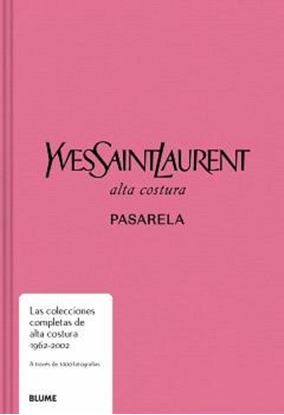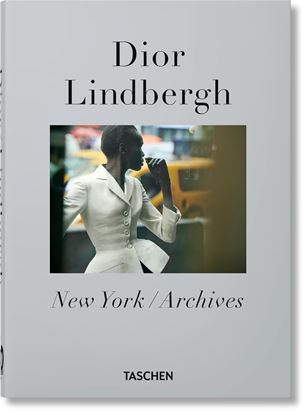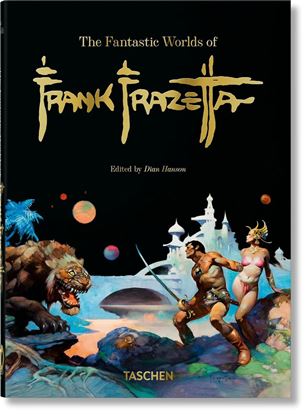

PASARELA. YVES SAINT LAURENT
El primer resumen completo de las magníficas colecciones de alta costura de Yves Saint Laurent, desde la inauguración en 1962 hasta su retirada en 2002, presentado a través de las fotografías originales de las pasarelas. Como homenaje al legendario diseñador, este libro es el registro de cuarenta años de creaciones icónicas de la alta costura, desde el radical «Le Smoking» (el primer traje de esmoquin para mujeres) de 1966 hasta las deslumbrantes creaciones inspiradas en el arte: vestidos «Mondrian», preciosos bordados «Van Gogh», capas «cubistas» y la famosa colección Ballets Russes, por nombrar algunos. * Incluye una introducción y una descripción sobre el perfil del diseñador a cargo de Suzy Menkes, así como los textos de las colecciones del Musée Yves Saint Laurent París. Un libro que ofrece una oportunidad única de mostrar las creaciones del diseñador que revolucionó el guardarropa de la mujer moderna. Con más de 1000 imágenes, este tesoro de inspiración es una referencia obligada para todos los profesionales de la moda y los seguidores de Yves Saint Laurent.
3,900
3,120
JANIS JOPLIN
Janis Joplin ha pasado a la historia como un alma impulsiva y apasionada, un ser con un destino sentenciado por el dolor que generaba una de las voces más extraordinarias que ha dado la historia del rock.
La célebre autora y biógrafa Holly George-Warren fue elegida expresamente por el Janis Joplin Estate para escribir el libro definitivo sobre su vida y su música, un complejo retrato revelador y profundo de una artista extraordinaria. Así, los hermanos de Joplin, Laura y Michael Joplin, proporcionaron a George-Warren acceso exclusivo y privilegiado a miles de archivos, documentos, incluidas transcripciones, correspondencias, fotografías, entrevistas perdidas y recuerdos, así como el acceso directo a la familia, compañeros de banda y amigos de la cantante.
1,650
1,320
LA FUERZA DEL CINE
Uno de los profesores de cine con más prestigio en Estados Unidos ofrece el curso definitivo de la A a la Z sobre las complejidades del cine. A petición de sus alumnos, el autor condensa en pocas líneas y de modo gráfico sus mejores clases, que han inspirado a numerosas generaciones de grandes cineastas y escritores de Hollywood.
Examina los patrones que convierten las películas en populares y memorables, y logra un libro útil tanto para quienes hacen películas como para los que solo pretenden entenderlas mejor.
1,600
1,280
LIFE, HOLLYWOOD (XL) (GB)
In November 1936, publisher Henry R. Luce launched Life as a photo-led weekly news magazine with a clear purpose: “To see life; to see the world; to eyewitness great events.” Before readers’ attention was consumed by television, Life served as their window to the world, and by the late 1940s, it was being viewed by 1 in 3 Americans. Jean Harlow was the first movie star to appear on a Life cover in 1937, and from then until 1972 over 200 covers featured Hollywood-related subjects, illustrating the strength of the bond between Life and the film industry.
15,000
12,000
DIOR LINDBERGH 40TH ED. (INT)
Peter Lindbergh photographed Dior’s most exceptional muses, Marion Cotillard and Charlize Theron among them, and signed campaigns for Lady Dior and J'Adore with his inimitable style. Throughout his career, the photographer was one of the house’s closest collaborators. This final book was an original cocreation that was close to the artist’s heart―and to ours.
2,200
1,760
THE FANTASTIC WORLDS OF. FRANK FRAZETTA.
Frank Frazetta has reigned as the undisputed king of fantasy art for 50 years, his fame only growing in the years since his death. With his paintings now breaking auction records (Egyptian Queen sold for $ 5.4 million in 2019) he’s long overdue for this ultimate monograph.Born to a Sicilian immigrant family in Brooklyn, 1928, Frazetta was a minor league athlete, petty criminal and serial seducer with movie star looks and phenomenal talent. He claimed to only make art when there was nothing better to do – he preferred playing baseball - yet began his professional career in comics at age 16. Strip work led him to the infamous EC Comics, then to oils for Tarzan and Conan pulp covers. Both characters were interpreted by many before him, but as he explained in the 1970s, “I’m very physical minded. In Brooklyn, I knew Conan, I knew guys just like him,” and he used this first-hand knowledge of muscle and macho to redefine fantasy heroes as more massive, more menacing, more testosterone-fueled than anything seen before. As counterbalance he created a new breed of women, nude as censorship allowed, with pixie faces and multiparous bodies: thick thighed, heavy buttocked, breasts cantilevered out to there, yet still, with their soft bellies and hints of cellulite, believably real. Add in the action, the creatures, the twilit worlds of haunting shadow and Frazetta’s art is addictive as potato chips.
1,750
1,400














